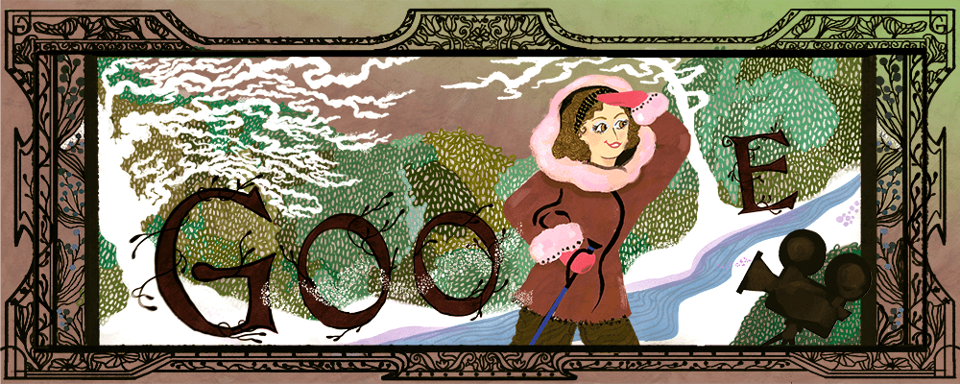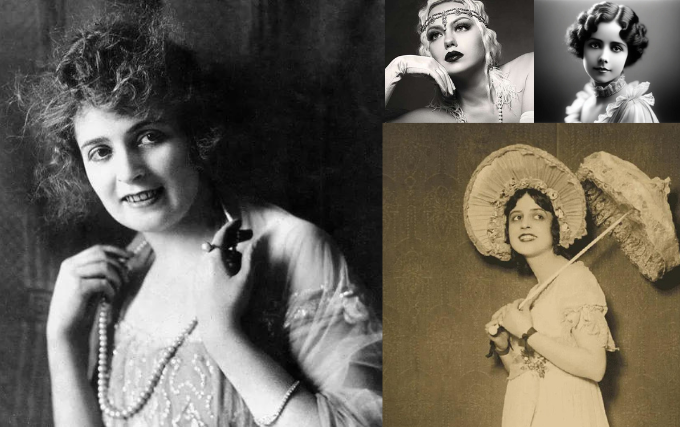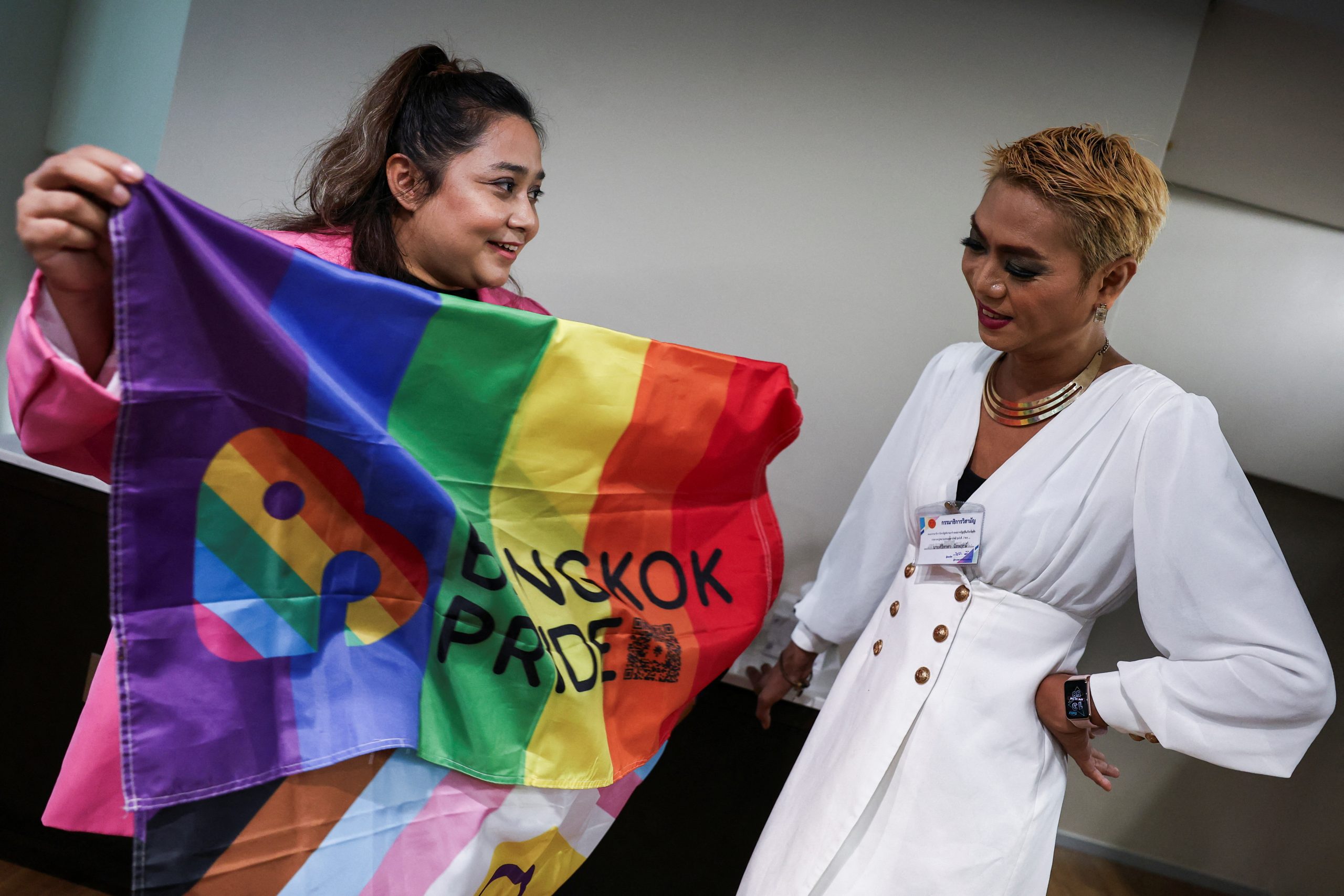Legal
Who was Myrtle Gonzalez? Family, Early Life, Education, Career, Net Worth

(CTN News) – In just five years, between 1913 and 1917, silent movie star Myrtle Gonzalez made eighty films, but her efforts are now forgotten. Gonzalez was born on September 28, 1891, into a family of Mexican descendants of Californios (settlers in California before the U.S. became a state, particularly Mexican and Spanish settlers) and Irish immigrants. Originally born in Los Angeles, CA, USA, the classic actress rose to fame in her native country.
Her early musical training led her to become a child soprano who sang in church choirs and theatres. It is believed that she performed throughout the city, according to scholar and author Rosa Linda Fregoso. Rosa Linda comments on this topic in her book, The Making of Social Identities on the Borderlands.
More related: The Real Story of Wife Crazy Stacie – All You Need To Know
Myrtle Gonzalez: Who is she?
Enid Maitland was a role that she played in 1915, which made her a famous Spanish actress. The Vitagraph film “The Chalice of Courage” had a popular character called Enid, which attracted the audience’s attention. In addition to these films, she has also starred in:
- The Yellow Streak (1913)
- The Little Sheriff (1914)
- The Secret of the Swamp (1916)
- The Girl of Lost Lake (1917)
Although Gonzalez played various roles, including innocent heroines and scheming villains, her remarkable acting never made the audience feel like they were watching a film.
During the action scenes, she mostly displayed athleticism and performed stunts. During the Spanish flu epidemic in 1918, another big star and amazing actress was lost. Despite her short career, a Google Doodle celebrates her birthday as one of the most popular silent film actresses of her time.

Family and Early Life of Myrtle Gonzalez
The daughter of Manuel George Gonzalez and Lillian L. Cook, she grew up in Manuel George Gonzalez’s family. The child soprano’s parents were retail grocery store owners, and her mother was a former opera singer and popular singer in her day. Additionally, Myrtle had two siblings, Stella M. Gonzalez and Manuel G.
Gonzalez Jr., with whom she lived throughout her childhood. Her marriage to James Parks Jones in 1910 resulted in the birth of one son, James Parks Jones Jr. before they separated. During the summer of 1917, Myrtle married her lifelong love, Allen Watt, a filmmaker and actor.
Because Watt was an officer in the US Army, Myrtle left acting to follow him to Camp Lewis in Washington State. As a result of her health (heart ailment), she was too frail to handle the harsh climate, and she easily got caught up in it. Within a few months, Captain Watt also retired, and both moved to Southern California.
After his return to Universal, Watt began directing movies. As a couple, they remained together until 1918, when Myrtle Gonzalez passed away.
A detailed family tree of Myrtle Gonzalez can be found here:

- Father: Manuel George Gonzalez (1868–1919)
- Mother: Lillian L. Cook (1874–1932)
- Siblings:
- Stella M. Gonzalez (1892–1965)
- Manuel G. Gonzalez Jr. (1898–?)
- Husbands:
- James Parks Jones (circa 1910–circa 1915)
- Allen Watt (1917–1918)
- Children: James Parks Jones Jr. (c. 1911–1970)
The Education of Myrtle Gonzalez
Since there’s little information regarding the singer’s educational activities (which have been completely hidden until now), it’s not widely known about her. Although a soprano, she began her career singing in church choirs, performances, and concerts.
There is a possibility that she may have taken some vocal training or performing arts skills classes privately or in public schools. Fanny Davenport and Florence Stone, two well-known actresses of that period, also appeared on stage with Myrtle Gonzalez.
Her ability to produce 80 films and perform astonishingly suggests she had some acting training. It is possible that her academic and national awards were achieved due to the education she received. It prepared her for her career as an actress and singer, which she demonstrated magnificently in her films.
The career of Myrtle Gonzalez
A silent film actress who followed in her mother’s footsteps and possessed innate talent began her acting career in her teens. The fact that she appeared in local vaudeville shows and musical productions and made her film debut in 1913, “The Yellow Streak,” indicates her understanding of the entertainment industry.
In the wake of some successful silent films, her acting quickly gained popularity, leading her to become a regular performer at Vitagrapseveralg. As a character, Myrtle Gonzalez appeared in the Vitagraph film “The Chalice of Courage,” which turned out to be a major box office hit.
Despite the film stabilising her position as a leading lady in the industry and earning her critical acclaim, she could not prolong her golden career era for long because she passed away after 2 years. She was only 27 years old when she died, but she had accomplished a lot already as a young actress and prodigy.
Therefore, she is widely known in the industry and is considered the glory of the early 1910s: her beauty, talent, versatility, and film work continue to entice silent film fans to this day.
The Net Worth of Myrtle Gonzalez
Analysing Myrtle Gonzalez’s net worth is difficult due to the limited financial information from the silent film era. Despite this, based on information about her salary, popularity, and lifestyle, we can calculate her net worth. She might have earned around $500 per week at the peak of her career—a significant amount in the early 1910s.
Additionally, the actress received bonuses, royalties, endorsement deals, and other income sources from her films. As a result of her hefty earnings and rich heritage, Gonzalez owned multiple homes, cars, jewellery, and clothing and travelled extensively. At the time of her death in 1918, Myrtle Gonzalez probably had a net worth of $100,000 to $250,000 based on her income and expenses.
Currently, it will be around $1.5 million to $3.75 million, adjusted for inflation. She may have a different net worth from this estimate; it is only an estimation. In sum, Myrtle Gonzalez’s contributions to the film industry paved the way for later generations of Latina actresses, and the industry cherishes her as a pioneering singer and actress.

Legal
Thai Court Amends Law to Allows Wives to Sue Husband’s Lovers

Thailand’s Constitutional Court has changed the Civil Code will allow women to sue their husbands’ lovers, male or female. The Constitutional Court found on Tuesday that Section 1523 of the Civil Code breached Section 27 of the constitution, which safeguards Thais’ rights and liberties regardless of gender.
The court directed that the verdict be enforced within 360 days.
Section 1523 of the Civil Code states that husbands can sue their wives’ lovers, and wives can sue other women who publicly display an adulterous connection with their husband.
Keirov Kritteeranon, secretary-general of the Office of the Ombudsman, stated that the Ombudsman had previously urged the court to rule on the legality of Section 1523, which allowed wives to suit only female lovers.
Husbands can now sue their wives’ boyfriends regardless of gender, and there was no requirement for any public declaration of an adulterous connection, he claimed.
Once enforced, Tuesday’s Constitutional Court order, according to the Ombudsman, will correct this imbalance.
Thailand Amends Marriage Law
Meanwhile, Thailand is set to become the first Southeast Asian country to recognise same-sex marriage, after its marriage equality law was passed in the Upper House on Tuesday and is now on its approach to being promulgated before going into effect in the coming months.
LGBTQ+ advocates rejoiced as the Senate voted 130-4 to pass the bill on its final reading, with 18 abstentions. They hailed the development as a win in their long struggle for equal rights.
When the advocates who had gathered at parliament on Tuesday to witness the Senate’s final reading and vote on the measure heard the outcome, they burst out in cheers.
They next went to authorities House, where the authorities had planned a celebratory reception for them later in the day. They then went to the Bangkok Art and Culture Centre, where the party lasted until late at night.
Prime Minister Srettha Thavisin, who is on sick leave due to Covid-19, congratulated them via Zoom call from Government House.
The new law will allow any two people aged 18 or older to register their marriage and obtain the same advantages and rights as heterosexual couples. The bill refers to married couples as “two individuals” rather than “a man and a woman,” and changes their legal status from “husband and wife” to “spouses.”
LGBTQ+ people from any country can legally marry in Thailand. When the bill goes into force, foreign same-sex married partners will be eligible for a spousal visa.
The law will be sent to the government for approval before being presented to the monarch.
It will take effect within 120 days of its publication in the Royal Gazette, making Thailand the third Asian country to accept same-sex marriages after Nepal and Taiwan.
Senator Kamnoon Sidhisamarn, spokesman for the Senate’s special committee evaluating the proposed law, called it a victory for equal rights campaigners.
“There is no reason for the Upper House to disagree with the judgement made by the House of Representatives,” he told reporters. He was referring to the legislation’s passage in the Lower House prior to its submission to the Senate for approval.
The battle for same-sex marriage legislation began 23 years ago. Tunyawaj Kamolwongwat, a Move Forward Party list-MP, said that the law’s passage on Tuesday signified the beginning of a new chapter in Thai history.
Source: Bangkok Post
Court Upholds Israel’s Ban on News Agency Al Jazeera
Legal
Thailand’s Senate Passes Landmark Marriage Equity Bill Legalizing Gay Marriage

Thailand’s Senate has approved a long awaited marriage equality bill on Tuesday, making the country the third Asian country to accept same-sex couples. The Senate approved the law 130-4 with 18 abstentions.
The marriage equality bill will be sent the palace for royal clearance. The marriage equality law takes 120 days to take effect after Royal Gazette publication.
LGBTQ+ advocates welcomed the proposal a “monumental step forward” because Thailand would be the first Southeast Asian country to legalise marriage equality. Thailand is popular with travellers due to its LGBTQ+ culture and tolerance.
“This would underscore Thailand’s leadership in the region in promoting human rights and gender equality,” the Civil Society Commission of marriage equality, activists, and LGBTI+ couples said.
Prime Minister Srettha Thavisin, who wore a rainbow shirt to commemorate Pride Month, joined thousands of LGBTQ+ revellers and activists in a Bangkok parade at the start of June.
The prime minister will open Government House to commemorate the bill’s passage. Pride supporters will march from Parliament to the prime minister’s office. Mr. Srettha, who has Covid-19, will join them online after taking several days off.
Deputy Prime Minister and Commerce Minister Phumtham Wechayachai anticipates June’s Pride Month to create approximately 4.5 billion baht in economic cash flow.

Pride Month in Thailand
On Saturday, Mr. Phumtham said the government under Prime Minister Srettha Thavisin is encouraging sexual diversity and working with the commercial sector to plan more Pride Month festivities to attract LGBTQ+ tourists.
He claimed it will increase the country’s trade potential by giving SMEs business expansion chances and adding soft power value.
Mr. Phumtham claimed Poonpong Naiyanapakorn, director-general of the Trade Policy and Strategy Office, told him Pride Month celebrations will make Thailand a “pride-friendly destination” for LGBTQ+ Thai and global consumers.
This would help the country become a regional tourism hub under the government’s “Ignite Tourism Thailand” initiative to enhance tourism in 55 “worth visiting” provinces.
He added that such festivals will support downstream industries like event planners, food and beverage companies, hotels, and transport services and disperse cash to local areas. Mr. Phumtham stated Thailand’s Pride Month began in 1999. Bangkok, Chiang Mai, Phuket, and Chon Buri host parades, festivities, and campaigns.
The Tourism Authority of Thailand (TAT) expects approximately 860,000 people to attend this year’s festival and contribute at least 4.5 billion baht for the economy. LGBT Capital estimates that the world’s LGBTQ+ population has US$4.7 trillion in purchasing power and Thailand’s sexually varied population has US$26 billion.
LGBTQ+ rights in Thailand are improving, but there’s still much to do. The LGBTQ+ community in Thailand is notably strong in Bangkok and Pattaya.
Strong legal recognition allows transgender people to change their names and titles. Many LGBTQ+ couples lack legal rights since same-sex marriage is banned.

LGBTQ+ rights in Thailand
Thailand is becoming more accepting despite these difficulties. LGBTQ+ rights are gaining favour. Activists want legal changes to guarantee equality.
Pride parades are becoming increasingly visible, demonstrating diverse acceptance. While challenges remain, LGBTQ+ rights in Thailand are improving as awareness and acceptance expand.
Legal
Protecting Your Designs: Intellectual Property Rights in the Jewelry Manufacturing Industry

The jewelry manufacturing industry is a vibrant and highly competitive sector where creativity and innovation are paramount. Designers invest significant time, effort, and resources into crafting unique pieces that appeal to consumers’ tastes and preferences. However, this industry faces a persistent challenge: the protection of original designs from imitation and unauthorized use.
Intellectual property rights (IPR) play a crucial role in safeguarding jewellery designs, ensuring that creators receive recognition and financial benefits from their work. This article delves into the various forms of intellectual property rights pertinent to the jewelry manufacturing industry and offers insights on how designers can protect their creations.
Understanding Intellectual Property Rights
Intellectual property rights are legal mechanisms that grant creators exclusive rights to their inventions, designs, and artistic works. These rights encourage innovation by providing creators with the means to control the use of their creations and to benefit financially from them. In the context of jewelry design, the most relevant forms of IPR are copyrights, trademarks, patents, and design rights.
Copyrights
Copyright protection extends to original works of authorship, including artistic creations such as jewelry designs. Under copyright law, the designer of a piece of jewelry automatically acquires the exclusive right to reproduce, distribute, and display the design upon its creation. This protection does not require registration, although registering the copyright with the appropriate governmental body, such as the U.S. Copyright Office, can provide additional legal benefits and evidence of ownership.
For jewelry designers, copyright protects the aesthetic aspects of a piece, such as the specific design, patterns, and artistic expressions. However, it does not cover the functional elements or the materials used. The duration of copyright protection varies by country, but it typically lasts for the life of the creator plus an additional 50 to 70 years.
Trademarks
Trademarks protect symbols, names, logos, and slogans that distinguish goods and services in the marketplace. For jewelry manufacturers, a trademark can cover the brand name, logo, or even a unique product line name.
Registering a trademark with the appropriate authority, such as the United States Patent and Trademark Office (USPTO), provides nationwide protection and the exclusive right to use the mark in connection with the specified goods or services.
A strong trademark helps consumers identify and differentiate a brand’s products from those of competitors, fostering brand loyalty and reducing the risk of confusion in the marketplace. It also provides legal recourse against counterfeiting and unauthorised use of the brand’s identity.
Patents
Patents protect new inventions and technical innovations. In the jewelry industry, this could include innovative manufacturing processes, unique mechanisms for adjustable or interchangeable jewelry, or novel materials and techniques. A patent grants the inventor the exclusive right to use, make, and sell the invention for a limited period, usually 20 years from the filing date of the patent application.
Obtaining a patent involves a rigorous process of proving that the invention is novel, non-obvious, and useful. For jewelry designers, the primary benefit of patent protection lies in safeguarding their innovative techniques and mechanical features, which can provide a competitive edge in the market.
Design Rights
Design rights specifically protect the visual appearance of a product, including its shape, configuration, pattern, and ornamentation. These rights are particularly relevant to the jewelry industry, where the aesthetic appeal of a product is a key selling point. In many jurisdictions, design rights must be registered to be enforceable, though some countries offer unregistered design rights that provide limited protection.
Registering a design right involves submitting detailed representations of the design to the relevant authority, such as the European Union Intellectual Property Office (EUIPO) for protection within the EU. Registered design rights typically offer protection for up to 25 years, subject to renewal fees.
Steps to Protect Jewelry Designs
- Document Your Designs: Maintain detailed records of your design process, including sketches, prototypes, and finished pieces. This documentation can serve as evidence of originality and ownership in case of disputes.
- Conduct Searches: Before launching a new design, conduct thorough searches to ensure it does not infringe on existing intellectual property. This can prevent legal issues and costly disputes.
- Register Your IP: Where applicable, register your copyrights, trademarks, patents, and design rights with the appropriate authorities. Registration enhances protection and provides legal advantages in enforcing your rights.
- Use NDAs and Contracts: When working with manufacturers, suppliers, and collaborators, use non-disclosure agreements (NDAs) and detailed contracts to protect your designs and outline the terms of use. ( Check out EJ: A Jewelry Manufacturer with NDA’s.
- Monitor the Market: Regularly monitor the market for potential infringements. This can involve online searches, attending trade shows, and staying informed about competitors’ activities.
- Take Legal Action if Necessary: If you discover an infringement, take prompt legal action to enforce your rights. This may involve sending cease-and-desist letters, pursuing litigation, or seeking alternative dispute resolution methods.
Challenges and Considerations
While intellectual property rights offer significant protection, there are challenges and limitations to consider. The cost and complexity of obtaining and enforcing IPR can be prohibitive, especially for small designers and startups. Additionally, the global nature of the jewelry market means that protections obtained in one jurisdiction may not be recognized elsewhere, necessitating international strategies for comprehensive protection.
Moreover, the fast-paced nature of fashion and jewelry trends can make lengthy registration processes impractical for certain designs. In such cases, relying on unregistered design rights or focusing on brand protection through trademarks may be more viable strategies.
Conclusion
Intellectual property rights are a vital tool for protecting the creativity and innovation that drive the jewelry manufacturing industry. By understanding and strategically utilizing copyrights, trademarks, patents, and design rights, designers can safeguard their creations, enhance their competitive edge, and ensure they reap the financial rewards of their ingenuity. As the industry continues to evolve, staying informed about IPR and adapting to emerging challenges will be crucial for sustaining success in the dynamic world of jewelry design.
People Also Reading:
Law Firm Chastised for Using OpenAI ChatGPT for Legal Research
Law Firm Chastised for Using OpenAI ChatGPT for Legal Research
-

 News3 years ago
News3 years agoLet’s Know About Ultra High Net Worth Individual
-
Entertainment2 years ago
Mabelle Prior: The Voice of Hope, Resilience, and Diversity Inspiring Generations
-

 Health4 years ago
Health4 years agoHow Much Ivermectin Should You Take?
-

 Tech2 years ago
Tech2 years agoTop Forex Brokers of 2023: Reviews and Analysis for Successful Trading
-

 Lifestyles3 years ago
Lifestyles3 years agoAries Soulmate Signs
-

 Movies2 years ago
Movies2 years agoWhat Should I Do If Disney Plus Keeps Logging Me Out of TV?
-

 Health3 years ago
Health3 years agoCan I Buy Ivermectin Without A Prescription in the USA?
-

 Learning3 years ago
Learning3 years agoVirtual Numbers: What Are They For?